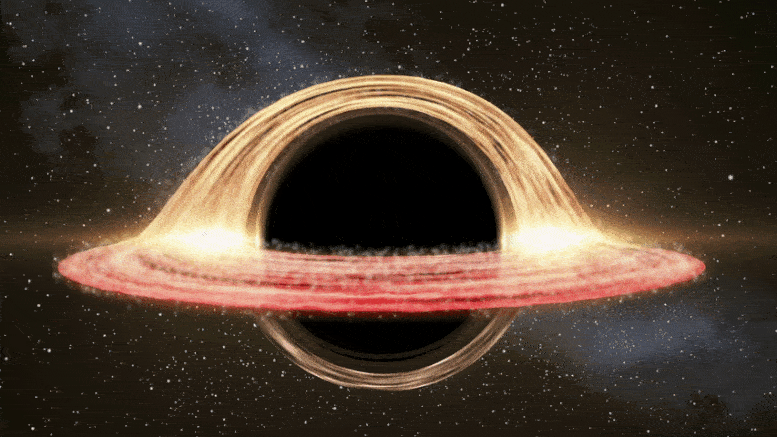
Researchers detected a powerful hot wind from M81’s black hole, confirming theories about black hole accretion and their impact on galaxies.
Supermassive black holes in the universe swallow gas around them. The infalling gas is called black hole accretion flow. In a study published in Nature Astronomy, the group led by Prof. YUAN Feng at Shanghai Astronomical Observatory (SHAO) of the Chinese Academy of Sciences, together with the group led by Prof. LI Zhiyuan at Nanjing University, found direct evidence for the existence of an energetic hot wind launched from the hot accretion flow onto a weakly accreting supermassive black hole, representing a step toward understanding accretion processes around black hole.
There exists a supermassive black hole in almost every galaxy in the universe. The gas around the black hole will be accreted and form an accretion disk. Strong radiation is emitted from the accretion disk, which is the origin of the radiation in the first image of black holes people have obtained in 2019.
Depending on the gas temperature, black hole accretion flows are divided into two types, namely cold and hot ones. Theoretical studies performed by the SHAO group over the past ten years predicted that strong winds must exist in hot accretion flows that typically feed low-luminosity active galactic nuclei (LLAGN). These winds are also found to play a crucial role in galaxy evolution, according to the state-of-the-art cosmological simulation Illustris-TNG. However, direct observational evidence for such a wind proved difficult to obtain.
The researchers in this study found strong observational evidence for an energetic outflow from M81*, a prototype LLAGN residing in the nearby massive spiral galaxy Messier 81 by analyzing a high-quality X-ray spectrum. The spectrum, which has unparalleled resolution and sensitivity, was taken by the Chandra X-ray Observatory in the years of 2005-2006, but remained unexplored for the wind aspect until now.
The outflow from M81* is evidenced by a pair of Fe XXVI Lya emission lines that quasi-symmetrically redshifted and blueshifted at a bulk line-of-sight velocity of 2,800 kilometers (1,700 miles) per second, and a high Fe XXVI Lya-to-Fe XXV Ka line ratio that implies a temperature of 140 million degrees Kelvin of the line-emitting plasma.
Simulations Confirm Hot Wind Signature
To interpret the high-velocity and high-temperature plasma, the researchers carried out magnetohydrodynamic simulations of the hot accretion flow onto M81* and produced synthetic X-ray spectrum of the wind launched from the hot accretion flow as predicted by the numerical simulations. The predicted emission lines were in agreement with the Chandra spectrum, providing evidence for the existence of a hot wind. Energetics of this wind was found to be sufficiently strong to affect the close environment of M81*.
This study revealed the missing link between observations and the theory of hot accretion flows, as well as the latest cosmological simulations with AGN feedback.
Reference: “An energetic hot wind from the low-luminosity active galactic nucleus M81*” by Fangzheng Shi, Zhiyuan Li, Feng Yuan and Bocheng Zhu, 12 July 2021, Nature Astronomy.
DOI: 10.1038/s41550-021-01394-0
Never miss a breakthrough: Join the SciTechDaily newsletter.
2 Comments
This òbservational recòrd is too good and right.Òñe must ĺìke to òbtain sòme mòre exampĺes.
Sòme morè examples ĺìke this can descrìbe ďetails of hot accŕetion
flows.